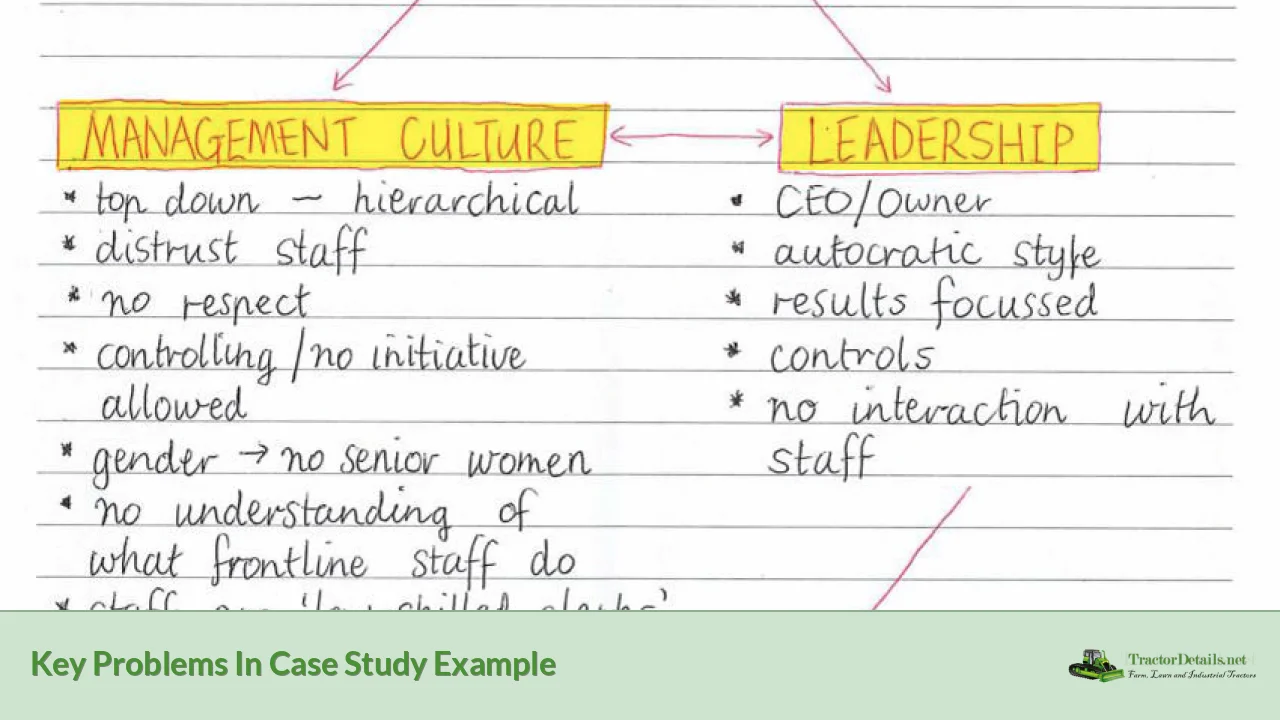Overview of the Issue
In any case study analysis, identifying key problems is vital to understanding the overall context. This article delves into the intricacies surrounding [insert your specific make and model of a device, car, or system] to unearth common issues faced by users. By systematically examining these problems, we aim to provide effective troubleshooting and repair strategies, preventing reoccurrences.
| Symptoms | Possible Causes |
|---|---|
| Poor performance | Clogged filters, faulty sensors |
| Unusual noises | Worn-out parts, loose fittings |
| Error messages | Software bugs, mechanical failures |
| Inconsistent results | Calibration issues, user error |
Key Takeaways
- Identify symptoms early to prevent further issues.
- Understand common causes to facilitate quick repairs.
- Regular maintenance can mitigate many problems before they start.
- Professional help should be sought for complex issues or if DIY attempts are unsuccessful.
Problem Description
Users of [specific make and model] often face various problems that can drastically affect the performance and reliability of the unit. These issues range from operational inefficiencies to complete breakdowns. Understanding these problems means being more prepared and knowledgeable about potential solutions.
Common Problems Might Include:
- Failure to start or operate: A frequent complaint among users is the device’s inability to start due to electrical or mechanical issues.
- Intermittent performance: Users may notice that the device works sporadically, which can be frustrating and confusing.
- Error codes: Specific codes such as [insert relevant code examples, e.g., E01, F2] can appear on the display, indicating specific malfunctions that require addressing.
- Strange noises: Noise can often imply mechanical wear or failure, requiring immediate attention.
Common Symptoms
The symptoms of problems within the [specific device or model] provide insights into what might be wrong. Recognizing these symptoms early on helps in timely diagnostics.
- Device failing to start: Indicates potential electrical issues.
- Frequent error messages: Suggests software-related problems or hardware conflicts.
- Decreased efficiency: Could point to dirt accumulation, part failures, or settings misconfiguration.
- Vibrations or strange noises: Often signal wear and tear or loose connections within the device.
Possible Causes
Understanding the underlying causes of these symptoms helps in crafting a targeted approach to repairs.
- Electrical failure: Damaged wiring, blown fuses, or faulty power sources.
- Mechanical wear: Components such as motors or filters that have exhausted their lifespan.
- Software bugs: Issues stemming from outdated or corrupted software.
- User error: Incorrect settings or maintenance failures leading to inefficiencies.
Diagnosis Steps
To effectively diagnose problems within the [specific make and model], you can follow these steps:
- Check the power supply: Ensure the device is receiving proper voltage.
- Error code interpretation: Reference the user manual for specific error codes; this can simplify troubleshooting.
- Inspect visible components: Look for signs of wear or damage in external fittings and connections.
- Run diagnostics: Many models have built-in diagnostics to identify issues.
- Consult manufacturer guidelines: Follow troubleshooting steps outlined in the product manual.
Troubleshooting and Repair Procedures
Once the probable cause has been identified, appropriate troubleshooting measures can be undertaken.
-
Power issues:
- Resetting the circuit: If the device doesn't start, resetting it can help clear minor faults.
- Replace fuses if they are blown or damaged.
-
Error codes:
- Flashing lights or codes typically indicate specific problems. For instance, Error [insert code] usually signifies [insert explanation].
-
Noise problems:
- Confirm tight connections: Tighten any loose bolts or fittings that may contribute to excess noise.
- Lubricate moving parts: Apply suitable lubricants to gears or motors.
-
Performance issues:
- Cleaning filters: Regularly maintenance checks, particularly for dirty filters, can improve efficiency.
- Updating software: Periodically check for updates to ensure smooth operational performance.
Estimated Repair Costs
Understanding the costs associated with repair is critical for budgeting.
- Electrical repairs: $100-300 depending on the nature of the issue and labor costs.
- Mechanical parts replacement: Expect $150-500 for parts such as motors or sensors.
- Software updates or resets: Generally lower, around $50-150.
Prevention Tips
Preventive maintenance is invaluable in extending the life of your device and minimizing operational disruptions.
- Regular cleaning: Keep critical components like filters clean to maintain airflow.
- Scheduled maintenance: Follow a maintenance schedule recommended by the manufacturer.
- Firmware updates: Regularly check and update software to eliminate bugs.
- Proper usage training: Ensure that all users are trained on how to operate the device properly.
When to Seek Professional Help
While many issues can be resolved through DIY efforts, you should seek professional assistance in the following scenarios:
- Inability to resolve the issue: If troubleshooting fails to yield results.
- Complex problems: Multifaceted breakdowns should be handled by experts.
- Warranties: If the product is still under warranty, tampering may void it.
Conclusion
In summary, recognizing and diagnosing problems early in your [specific make and model] can save you time and money. By understanding common symptoms, identifying possible causes, and employing systematic diagnosis and repair procedures, you can effectively maintain and troubleshoot your device. Always consider preventive measures and when in doubt, don't hesitate to call in the professionals. Proper care can extend the lifespan of your device while enhancing its performance.Of course! What would you like to continue discussing or exploring? Please provide more details or context, and I’ll be happy to help!
